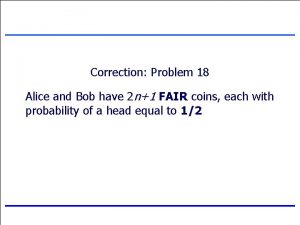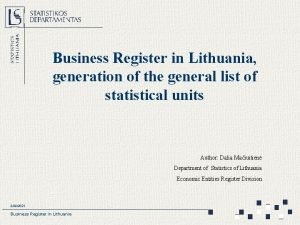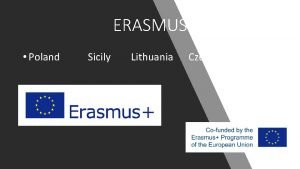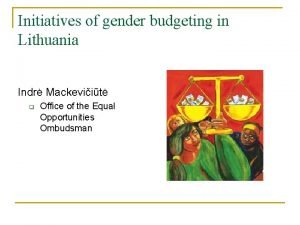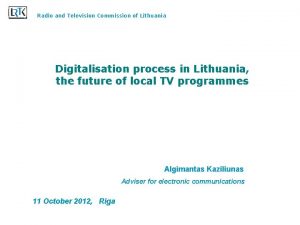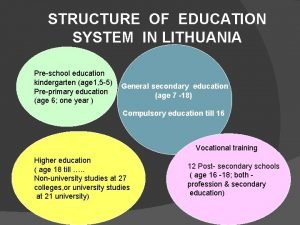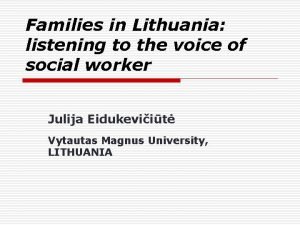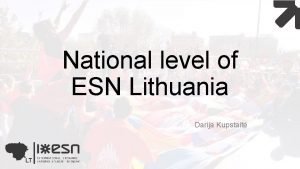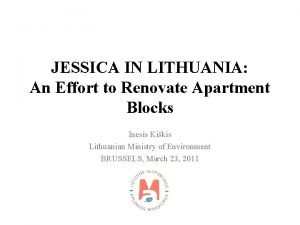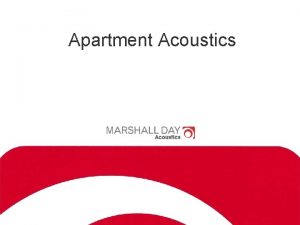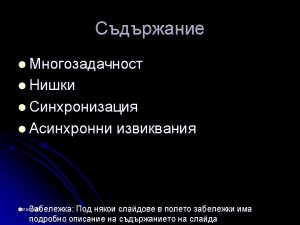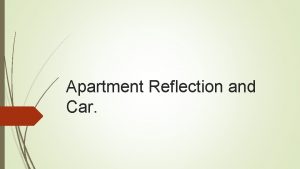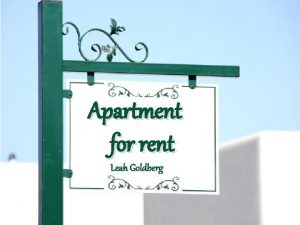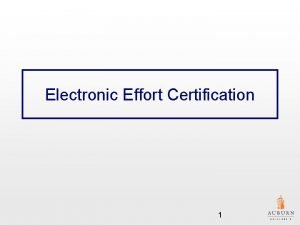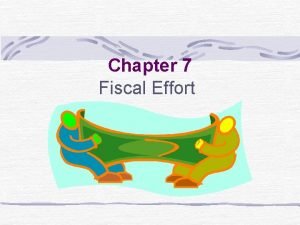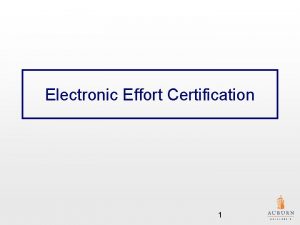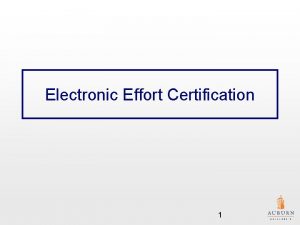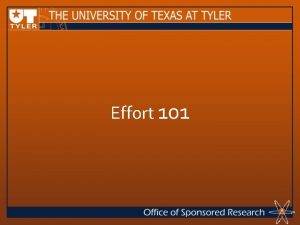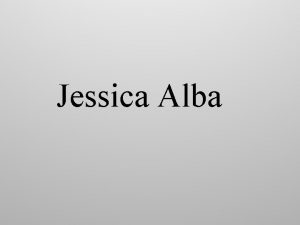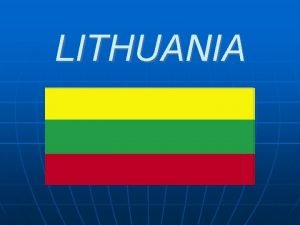JESSICA IN LITHUANIA An Effort to Renovate Apartment



















- Slides: 19

JESSICA IN LITHUANIA: An Effort to Renovate Apartment Blocks Inesis Kiškis Lithuanian Ministry of Environment BRUSSELS, March 23, 2011

Facts about Lithuanian Housing (I) • • population - 3, 37 million more than 38, 000 apartment blocks more than 800, 000 apartments 66 % of population lives in multi family buildings built before 1993

Facts about Lithuanian Housing (II) • most in poor condition, lack of proper management • inefficient heating systems and engineering equipment, poor quality windows, roofs, seals between panels • more than 57 % of households are not satisfied with their houses • During privatization, only apartments were privatized, but not the buildings as such • 97% private, only 3 % municipal rental stock

Energy supply pattern 65 % of multifamily buildings are served by district heating systems Current energy consumption ~ 160 k. Wh/m 2

Why JESSICA? • Attempts to launch modernisation of apartment blocks in early 90’s were rejected; • World Bank Project in 1996 -2004 • Subsidised renovation program launched in 2006 • Program ran out of money in late 2007 • Decision to launch a “win-win” scheme using JESSICA in early 2009

JESSICA Holding Fund Committed: € 227 million: - € 127 million European Regional Development Fund - € 100 million National co-financing Actual Contribution to date: € 149, 4 million - € 127 million European Regional Development Fund - € 22, 4 million National co-financing

“Old” Renovation Program • 50% of investment cost compensated • Commercial banks participated in offering “own” contribution at market rates • Borrowers were home-owner associations

“New”Renovation Program Fixed interest rate at 3% Maturity up to 20 years 2 years grace period (during construction) No collateral 15% written-off if certain energy efficiency level achieved (upon completion) 85 -110 k. Wh/m 2 (Class “C”) 110 -145 (Class “D”) • 100% of costs to prepare renovation documentation reimbursed (paid from national funds) • 100% of reimbursement of installments to low income families • • •

Some additional figures • Number of eligible apartment blocks – 24000 • Estimated cost to renovate one apartment block (60 apartments @50 m 2) 290, 000 Euro • After the modernization, one house would halve energy consumption and save 125 MWh a year

Eligible costs • Costs contributing to increase of energy efficiency: – Replacement of windows – Replacement of doors – Insulation of ceilings/roofs – Insulation of walls – Installation of solar panels/wind mills – Replacement of energy related equipment – Replacement of elevators and electrical wiring in shared areas (stair wells, basements)…

Major actors (I) • House-owner associations – project proponents

Major Actors (II) • Housing and Urban Development Agency (HUDA) – advisory services and certification of works

Major Actors (III) • Commercial banks aka Urban Development Funds (UDFs) – assess creditworthiness, award and administer loans

Who Does What: Flowchart

Achievements to Date • Agreements with 3 UDFs signed • 3 loans with home-owner associations signed • 71 home-owner associations have decided to join the program • 31 investment projects have been vetted by Housing and Urban Development Agency (HUDA) • 5 applications under review by UDFs

Major Challenge To overcome the distrust, to restore confidence in Government sponsored programs

EIB Involvement • • Selected without any procurement procedure Contract negotiations pretty fast and smooth EIB does a lot of analytical and technical work Authorities hardly would have had enough human resources to accomplish all tasks – Review of the relevant legal acts: EU and national – Identification of the stumbling blocks – Prepare selection criteria for selection of Urban Development Funds (UDFs) – Selection of UDFs – Negotiation and signing agreements with UDFs

The Challenges • Number of challenges indentified during negotiations with UDFs – Possible state aid issues – need to identify and register – Legality of personal data handling – Turning the apartment owners into borrowers (possibly) against their will, and as a consequence: – Questioning the constitutionality of entire scheme

It Shall Work Like This Before Thank you! After
 Alice and bob have 2n+1 coins
Alice and bob have 2n+1 coins Lithuania countryside
Lithuania countryside Business register lithuania
Business register lithuania Vente lithuania
Vente lithuania Lithuania czech republic
Lithuania czech republic Budgeting in lithuania
Budgeting in lithuania Romualdas trusovas
Romualdas trusovas Anna facchinetti
Anna facchinetti Popular sports in lithuania
Popular sports in lithuania Feliksas dobrovolskis
Feliksas dobrovolskis Lithuania cruise port
Lithuania cruise port Famous places in lithuania
Famous places in lithuania Lithuania caa
Lithuania caa Sundial on parnidis
Sundial on parnidis Lithuania dmc
Lithuania dmc Communication lithuania
Communication lithuania Christmas in lithuania
Christmas in lithuania Secondary school grading system
Secondary school grading system The voice lithuania
The voice lithuania Esn lithuania
Esn lithuania
